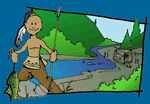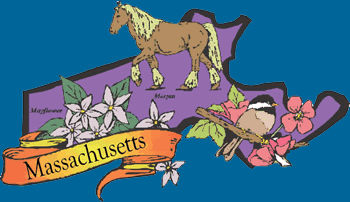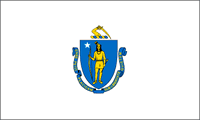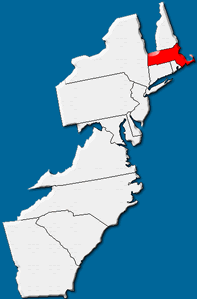


Geography and Landforms:
Massachusetts is 45th in size among the states. At its widest point, it is 190 miles from East to West and 110 miles from North to South. Massachusetts has a coastline of 192 miles.
|
 History:
Before the Pilgrims landed at Plymouth, European explorers roamed the coast of Massachusetts. They included the Viking Leif Erickson, Spanish and French fishermen, and John Smith, an English sea captain. His book, A Description of New England, influenced a group of English Protestants to make a pilgrimage to the shores of Massachusetts. They had separated from the Church of England and were seeking religious freedom.
|
 Economy:
Since colonial times, Massachusetts has been an important industrial state and a pioneer in developing new technologies. Today the state leads in the production of electronic and technical equipment, plastics, paper products, and metal and rubber products.
|
 First Inhabitants:
When European explorers first came to the coast of what is now Massachusetts, there were already tens of thousands of Native Americans living there. They were all part of the Algonkian family and lived in organized communities where they farmed, hunted, and fished. They lived in dome-shaped houses called wigwams and produced their own ceramics, textiles, leather, and basketry.
|
Books Related To MassachusettsAbigail's Drum - John Minahan Blue Heron - NA Avi Firehorse - Diane Lee Wilson How Ya Like Me Now - Brendan Halpin I Walk in Dread - Lisa Rowe Fraustino Lyddie - Katherine Paterson M is for Mayflower: A Massachusetts Alphabet - Margot Theis Raven Olive's Ocean - Kevin Henkes The Rag and Bone Shop - Robert Cormier Someday - Jackie French Koller Torchlight - Carol Otis Hurst |
Famous Citizens:
|
| Capital: | Boston |
| Entered Union: | February 6, 1788 |
| Population: | 6,745,408 |
| Area | 10,555 |
| Bird | Chickadee |
| Flower | Mayflower |
| Nickname: | Bay State, Old Colony State |
| Governor | Charlie Baker |
Places to Visit in Massachusetts: (Click the links to learn more.)
|



